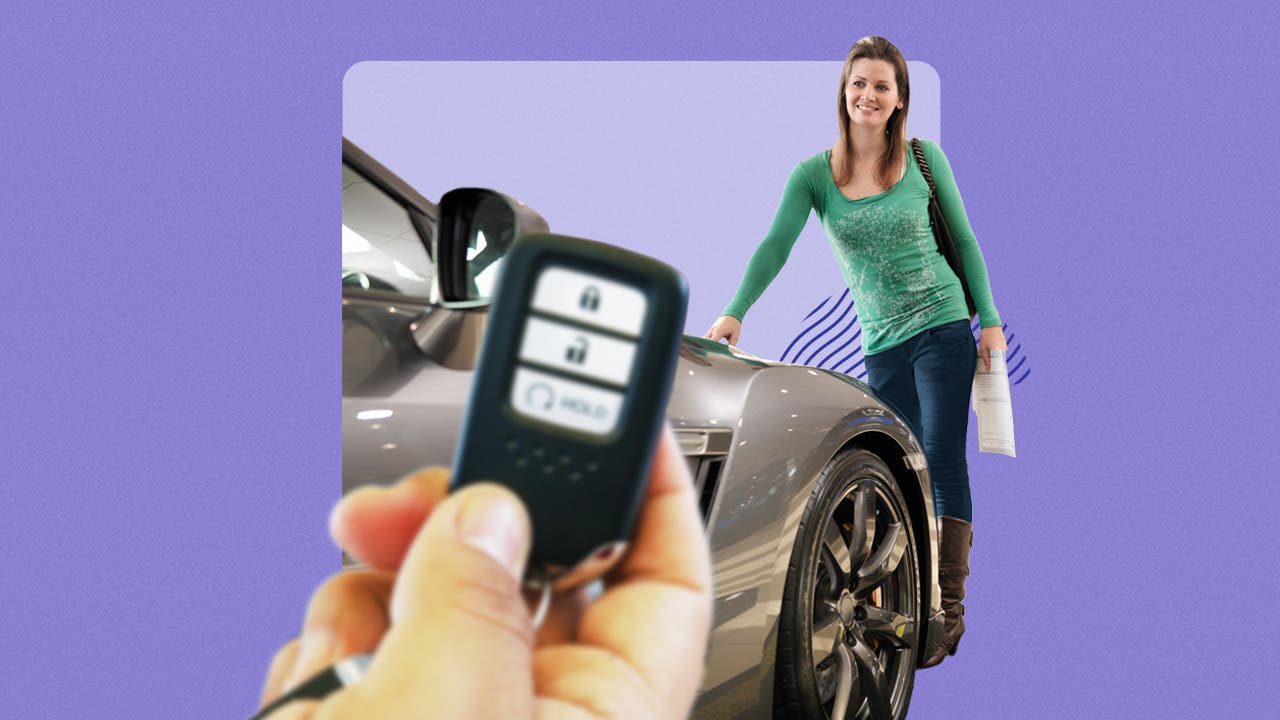Buying a car in 2025: What’s changed?

Key takeaways
- Vehicle inventory has increased, making it much easier for shoppers to find the car they want this year.
- One way to spend less time at the dealership is to research prices and negotiation tactics beforehand.
- Comparing different loan options will help you to secure the best deal when purchasing a vehicle this year.
A car can be the second most expensive purchase many consumers make in their lifetime. Securing this high-ticket item has historically been a somewhat painful experience filled with haggling and confusion at the dealership. But following the pandemic, many dealers are embracing the shift to online and creating a more seamless buying experience.
If you plan to purchase a vehicle this year, you should prepare for steep interest rates, especially for those with poor credit. But you can also expect more available inventory and more tech to speed the purchase process. Here’s how to buy a car in 2025.
Car shopping in 2025: What to expect
If you have waited to purchase a new vehicle to secure a more competitive deal, your patience may pay off. Bankrate spoke with Dave Thomas, director of content marketing and automotive industry analyst at CDK Global, for insight on upcoming trends this year.
Inventory has largely stabilized
In February, over half of shoppers (49 percent) found the vehicle that they wanted in stock, according to CDK — down from 59 percent in January.
“We’ve experienced a year of what I would call very stable inventory. For the most part, shoppers are finding what they want at the dealership,” says Thomas. “[They] need to do their research, especially if they’re looking to buy one of the more popular vehicles in the country.”
While 79 percent of CDK survey respondents said finding their desired car was easy, the number is down slightly from 80 percent who expressed similar sentiments a month prior.
Interest rates remain high
Those with solid credit will likely see lower rates this year, predicts Bankrate Chief Financial Analyst Greg McBride, CFA. And there has been some movement since the beginning of the year. The average interest rate for a 60-month new car loan was 7.42 percent — down from a recent high of 7.53 percent, according to the weekly Bankrate Monitor survey.
Opting for dealer financing may also be a smart move for those who qualify.
According to Thomas, “Automakers have ratcheted up incentivized interest rates over the past six months to move inventory. That means a buyer’s best chance of securing the lowest rate is often through the automaker’s finance arm.”
Although there have been moves to lower the Fed rate, it has not had a significant impact on auto loans. Interest rates remain high, especially if you’re shopping for a bad credit auto loan.
Bankrate staff insights
Buyers still prioritize prices
If you’re shopping for a vehicle this year, you may use price as your primary focus. That’s the case for 48 percent of buyers, according to the 2025 CDK Friction Points Study survey. Shoppers have been met with record-high price tags over the past few years, and the average amount financed for both new and used loans has increased since 2023.
As of February 2025, new car prices were up 1.0 percent year-over-year, according to data from Kelley Blue Book. Fortunately for some shoppers, used vehicle prices dropped two percent from January 2024 to January 2025.
While these changes may seem slight, with interest rates remaining high, any cost offset can help you secure a more manageable monthly cost.
When determining your budget, consider interest and ongoing costs like maintenance and gas — not just the monthly payment.
Lenders continue to favor good credit
As with many large purchases, you are significantly more likely to be approved with a strong credit score. Recent Experian data shows that over 83 percent of new car loans and 60 percent of used car loans were issued to borrowers with credit scores above 660.
Borrowers with subprime scores of 600 or lower accounted for less than 22 percent of used auto loans and just 5.68 percent of new auto loans in the fourth quarter of 2024.
“Access to credit still remains a significant issue for many buyers,” says Thomas. The data supports him — less than 16 percent of all auto loans were issued to borrowers with subprime credit. There may be change in the coming months, but it’s likely that the automotive industry will continue to favor higher credit scores when it comes to financing loans.
Wait times are on the rise
If you do plan to finance through a dealership, be prepared for a longer visit. The CDK Friction Points Study found that 49 percent of customers had to wait 30 or more minutes for the finance and insurance (F&I) department in 2024, up from 37 percent in 2023.
Combining online and in-person shopping can save time. Many people choose to handle some aspects of car shopping completely online before visiting the dealership, Thomas explains. Online tools can break down exactly what each trim level includes for easier side-by-side comparison. Do that research in advance so you can focus on test-driving and hands-on inspection.
4 ways to use online car shopping to your advantage
The process of buying a car online is still relatively new, and it requires a bit of learning. While some advice falls in line with traditional car shopping, consider these tips when skipping the showroom floor.
1. Set a budget
Before you choose the type of vehicle that you want, determine how much you’re willing to spend and set a budget. Factors like your salary, fuel use, insurance and regular maintenance costs can help guide your decision.
Your down payment and trade-in should also be part of the budgeting process. The larger your down payment, the less you’ll need to borrow with an auto loan, which in turn reduces your monthly car payments. Similarly, trading in a car that you own outright — or at least have positive equity in — can reduce how much financing you need.
2. Apply for preapproval
Applying for preapproval with multiple lenders gives you an idea of what interest rate you qualify for, which in turn plays a significant role in calculating your monthly payment.
You aren’t limited to the dealership. Banks, credit unions and online lenders all offer auto loans with competitive rates. Credit unions, for example, had an average rate of 5.91 percent for a 48-month new car loan, according to the National Credit Union Administration. The bank average for the same loan term was 7.45 percent.
When shopping, it is best to compare financing options beyond the dealership, like those offered by banks, credit unions or online lenders.
3. Research your options
Consider what factors matter to you most when searching for the right vehicle. Do you care about size, fuel economy or even style and color? While you might not be able to explore your new ride in person, YouTube car tours are a great resource to see the specifics a vehicle has to offer.
Another advantage to shopping for your vehicle online is the option to check local inventory before going to look in person. It may be easier to compare two or more available car options side-by-side, including reviewing all costs and features associated with the car. Online car dealers typically post prices clearly, and there’s no haggling or negotiations.
If you do decide to purchase a vehicle at a local dealership, shopping online can help you negotiate with the dealership. Additionally, car shopping online allows you to view vehicle options more efficiently without having to drive from one dealership to another, saving time. You can also view vehicles available in other parts of the country, potentially completing the entire transaction online.
4. Look for good deals
Shopping around for the best deal possible is an important part of car buying. While doing your research, look for special financing offers from dealers and manufacturers, such as vehicle rebates and 0 percent financing.
A rebate, for instance, is a flat amount taken off the price of a car that can total thousands of dollars in savings. Often, rebates are designed as incentives for a specific car model. Rebates are typically offered by manufacturers, and you’ll generally need to go to dealers that work with the manufacturer in question.
Another special offer that’s commonly available is 0% APR financing. However, these loans are generally only available through manufacturer-owned, captive finance companies and are reserved for buyers with excellent credit.
Bottom line
It’s clear the car-buying experience has shifted for both the dealer and the buyer following the pandemic. But it’s important to remember that a refresh in the industry is taking place, and it is bringing increased accessibility and transparency to the driver. While car lots aren’t going anywhere in 2025, consider starting your search online to potentially save money and time.
Why we ask for feedback Your feedback helps us improve our content and services. It takes less than a minute to complete.
Your responses are anonymous and will only be used for improving our website.






